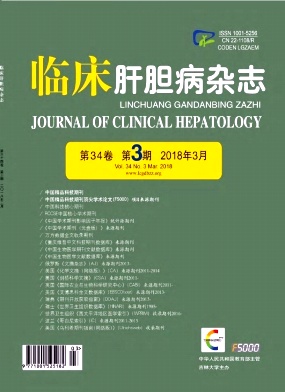|
[1]The Study of Drug Induced Liver Disease of Chinese.Diagnosis and treatment guideline on drug-induced liver injury[J].J Clin Hepatol, 2015, 31 (11) :1752-1769. (in Chinese) 中华医学会肝病学分会药物性肝病学组.药物性肝损伤诊治指南[J].临床肝胆病杂志, 2015, 31 (11) :1752-1769.
|
|
[2]CHALASANI NP, HAYASHIPH, BONKOVSKYHL, et al.ACG Clinical Guideline:the diagnosis and management of idiosyncratic drug-induced liver injury[J].Am J Gastroenterol, 2014, 109 (7) :950-966.
|
|
[3]REN ZQ, WANG JH, GUO XY, et al.A review analysis of Chinese literatures 2005-2014:clinical features of drug-induced liver injury[J].Chin J Pharmacoepidemiol, 2015, 25 (5) :284-289. (in Chinese) 任张青, 王进海, 郭晓燕, 等.2005~2014年我国药物性肝损伤临床综合分析[J].药物流行病学杂志, 2015, 25 (5) :284-289.
|
|
[4]BJORNSSON ES.Drug-induced liver injury due to antibiotics[J].Scand J Gastroenterol, 2017, 52 (6-7) :617-623.
|
|
[5]AHMAD J, ODIN JA.Epidemiology and genetic risk factors of drug hepatotoxicity[J].Clin Liver Dis, 2017, 21 (1) :55-72.
|
|
[6]ZHOU GQ, LI B, ZENG LL, et al.Clinical features of drug-induced liver injury due to Chinese herbs:an analysis of 80 cases[J].Lishizhen Med Mater Med Res, 2013, 24 (4) :967-968. (in Chinese) 周桂琴, 黎波, 曾玲玲, 等.80例中草药致药物性肝损伤的临床特征分析[J].时珍国医国药, 2013, 24 (4) :967-968.
|
|
[7]YAO YJ, LIU HL, ZHU B, et al.Analysis of clinical features and pathological change in 441 patients with drug-induced liver injuries[J].J Pract Hepatol, 2015, 18 (3) :286-289. (in Chinese) 姚云洁, 刘鸿凌, 朱冰, 等.441例药物性肝损伤患者临床和肝组织病理学特征分析[J].实用肝脏病杂志, 2015, 18 (3) :286-289.
|
|
[8]FRENZEL C, TESCHKE R.Herbal hepatotoxicity:clinical characteristics and listing compilation[J].Int J Mol Sci, 2016, 17 (5) :588.
|
|
[9]WAN B, ZENG YL, CHEN Z, et al.Clinical features and nursing measures of 54 children with drug-induced liver injury caused by antituberculosis treatment[J/CD].Chin J Liver Dis:Electronic Edition, 2016, 2 (8) :34-38. (in Chinese) 万彬, 曾义岚, 陈竹, 等.54例抗结核药致儿童药物性肝损伤的临床特点及护理[J/CD].中国肝脏病杂志:电子版, 2016, 2 (8) :34-38.
|
|
[10]XU ZL, GAO M, GUO CX, et al.Clinical features of different types of drug-induced liver injury and their association with liver histological changes[J].J Clin Hepatol, 2017, 33 (5) :924-927. (in Chinese) 徐曾丽, 高敏, 郭春霞, 等.药物性肝损伤临床分型特点及其与肝组织学改变的关系[J].临床肝胆病杂志, 2017, 33 (5) :924-927.
|
|
[11]LI J.Clinical features and treatment of drug-induced hepatitis:an analysis of 228 cases[J].China Prac Med, 2016, 11 (2) :173-174. (in Chinese) 李菁.228例药物性肝炎临床分析及治疗[J].中国实用医药, 2016, 11 (2) :173-174.
|
|
[12]ZHANG CP, CUI XL, WANG YM.Retrospective analysis of 200patients with drug induced liver injury[J].Chin Hepatol, 2014, 19 (7) :483-486. (in Chinese) 张长平, 崔向丽, 王咏梅.药物性肝损伤200例临床分析[J].肝脏, 2014, 19 (7) :483-486.
|







 DownLoad:
DownLoad: